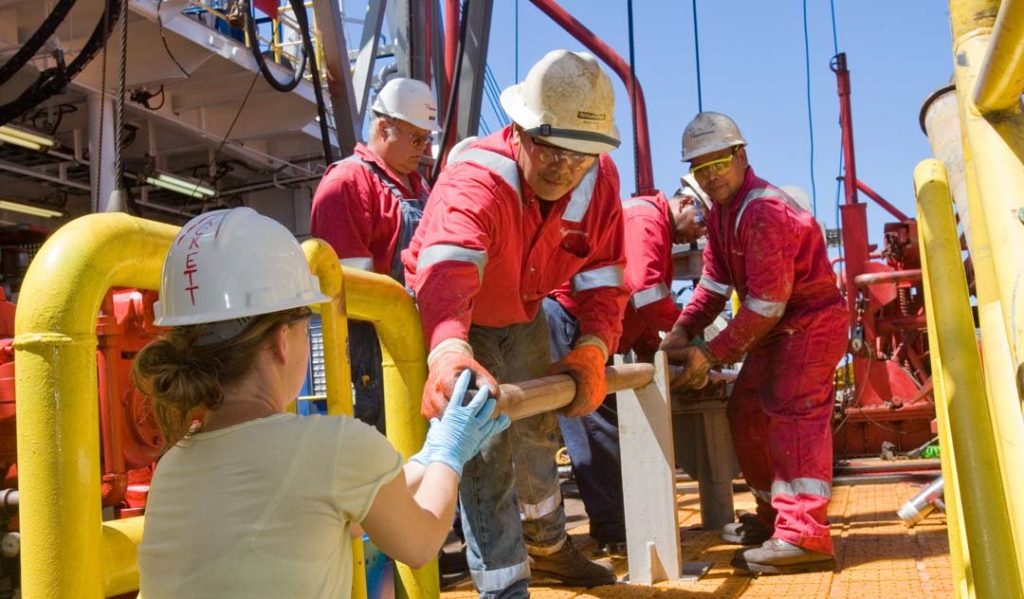
Spaghetti and a Penny
“Have you ever tried to hit a penny with a spaghetti that is as long as the Empire State Building is tall? I mean: you ARE standing on top of the Empire State and you try to hit that penny from the roof of the building….” That is about what I witnessed this morning on board The JR; and the procedure the crew performed was described to me with this type of analogy – and I believe it now – that this is what the drilling crew on this incredible research vessel do on a regular basis…
OK, envision that – TRY IT!
- Water Depth: 5 km (here is your Empire State Building)
- Steel Pipes: screwed together to that same length (here is your spaghetti, wobbles like crazy due to extreme length, torque and stress and tension along its way down to the seafloor…) Each spaghetti = 90 m
- Hit a pre-defined spot on the seafloor with that spaghetti (here is your penny…) – Insert that pipe/spaghetti into seafloor, shoot some more stuff down the pipe to extract some mud in a plastic tube (I guess that would be the penny vacuumed from the sidewalk…). Challenge: How could you model this at school? How could you devise to pick up the penny?
Get it? That’s what these guys do — not once, but EVERY single time The JR goes out to sea and the crew performs this insane act of “wobbly” steel pipe, inserting that pipe into the seafloor and one by one shooting further and further down into the seafloor. Meanwhile the ship rides the waves at the ocean surface, being held in place by some extra propellers (thrusters) that turn the ship into a rock in the middle of the ocean…
I was in awe when I saw the whole operation this morning. And before the pipe went down, one guy was pulled all the way into the air to do something in lofty heights on the rig – totally incredible! Like a Cirque De Soleil performance on top of an Engineering Master concert directed by unseen forces of experience and competence…
And the reward in the end? The FIRST core of LEG 320, retrieved at 12°04.089? N, 142°09.698? W! Wo-Hoo!!!!
NOTE: Thomas is editing video of the experience he describes above. We will post it here when he has time to finish editing. After all, Thomas works from 1800 hrs (that’s 6:00 p.m.) until 0600 hrs (6:00 a.m.) every day of the week!
Photo: Marine Laboratory Specialist Sara-Jane Jackett receives the second core at IODP Expedition 320 Site 1331. Credit: Bill Crawford, IODP Imaging Specialist.